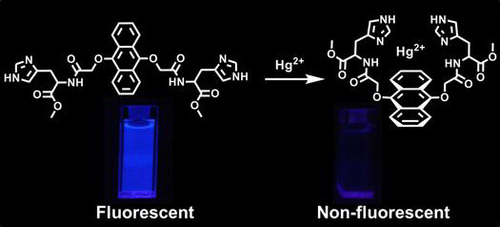

Histidine-dialkoxyanthracene (HDA) was synthesised as a turn off type fluorescent sensor for fast and sensitive detection of mercury ions (Hg2+) in aqueous media. The two histidine moieties act as ‘claws’ to selectively complex Hg2+. The binding ratio of HDA to Hg2+ was 1:1 (metal-to-ligand ratio). The association constant for Hg2+ towards the receptor HDA obtained from Benesi–Hildebrand plot was found to be 3.22 × 104 M−1 with detection limit as low as 4.7 nM (0.94 μg/L).
